Abstract
Pigeons pecked a key under two-component multiple variable-ratio schedules that offered 8-s or 2-s access to grain. Postreinforcement pausing and the rates of responding following the pause (run rates) in each component were measured as a function of variable-ratio size and the size of the lowest ratio in the configuration of ratios comprising each schedule. In one group of subjects, variable-ratio size was varied while the size of the lowest ratio was held constant. In a second group, the size of the lowest ratio was varied while variable-ratio size was held constant. For all subjects, the mean duration of postreinforcement pausing increased in the 2-s component but not in the 8-s component. Postreinforcement pauses increased with increases in variable-ratio size (Group 1) and with increases in the lowest ratio (Group 2). In both groups, run rates were slightly higher in the 8-s component than in the 2-s component. Run rates decreased slightly as variable-ratio size increased, but were unaffected by increases in the size of the lowest ratio. These results suggest that variable-ratio size, the size of the lowest ratio, and reinforcer magnitude interact to determine the duration of postreinforcement pauses.
Keywords: postreinforcement pause, variable-ratio schedule, lowest ratio, reinforcer magnitude, run rate, key peck, pigeons
Full text
PDF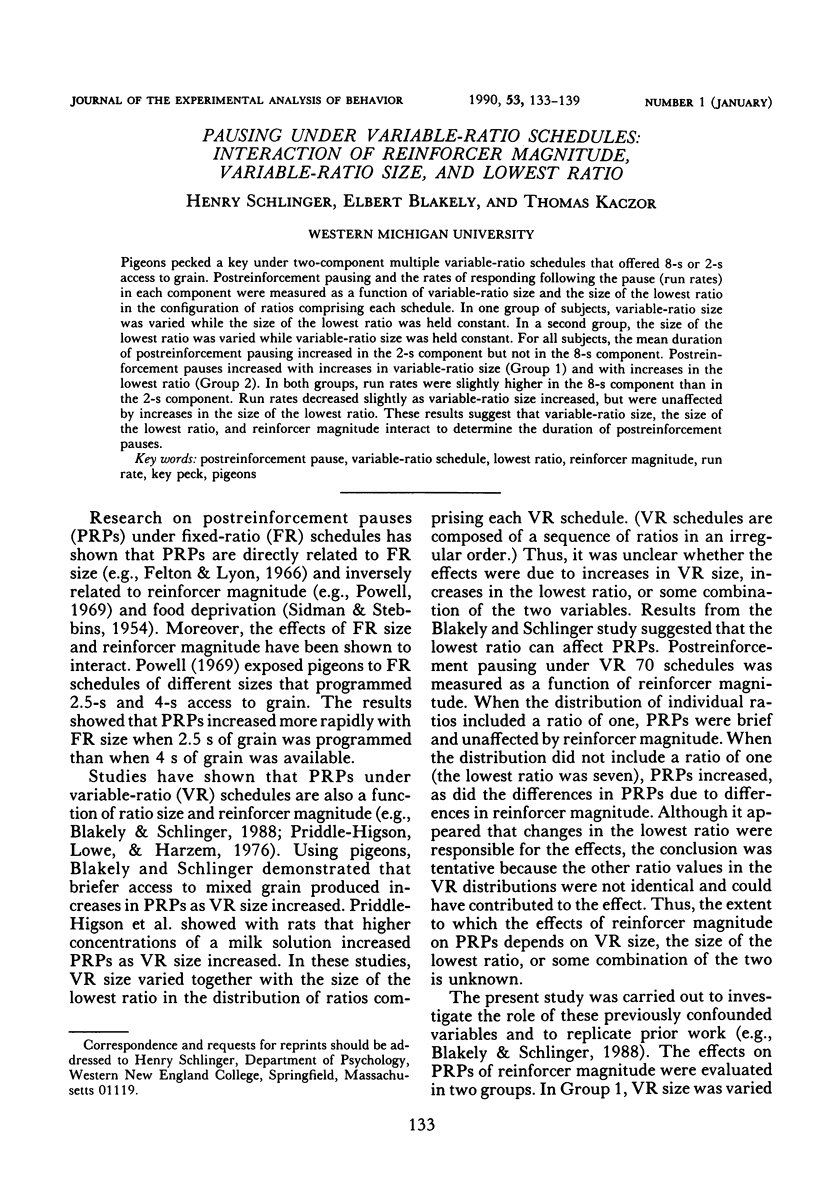
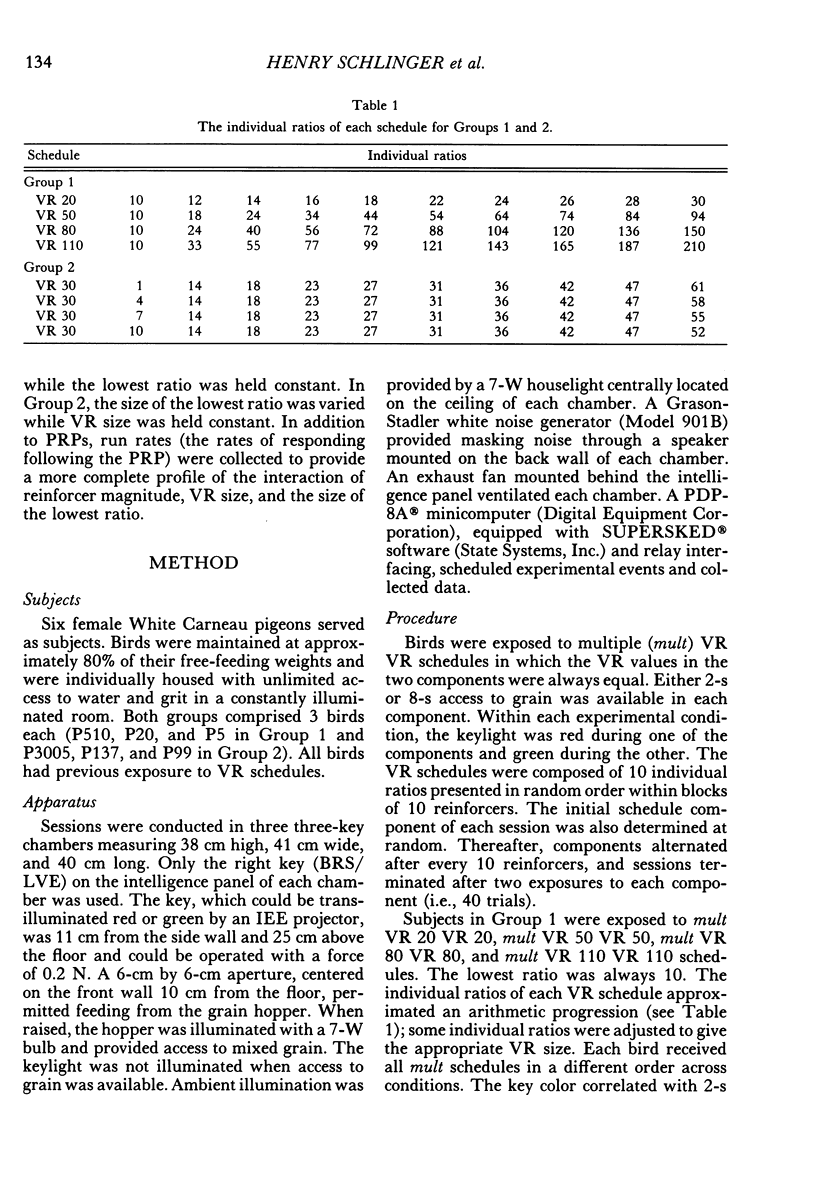
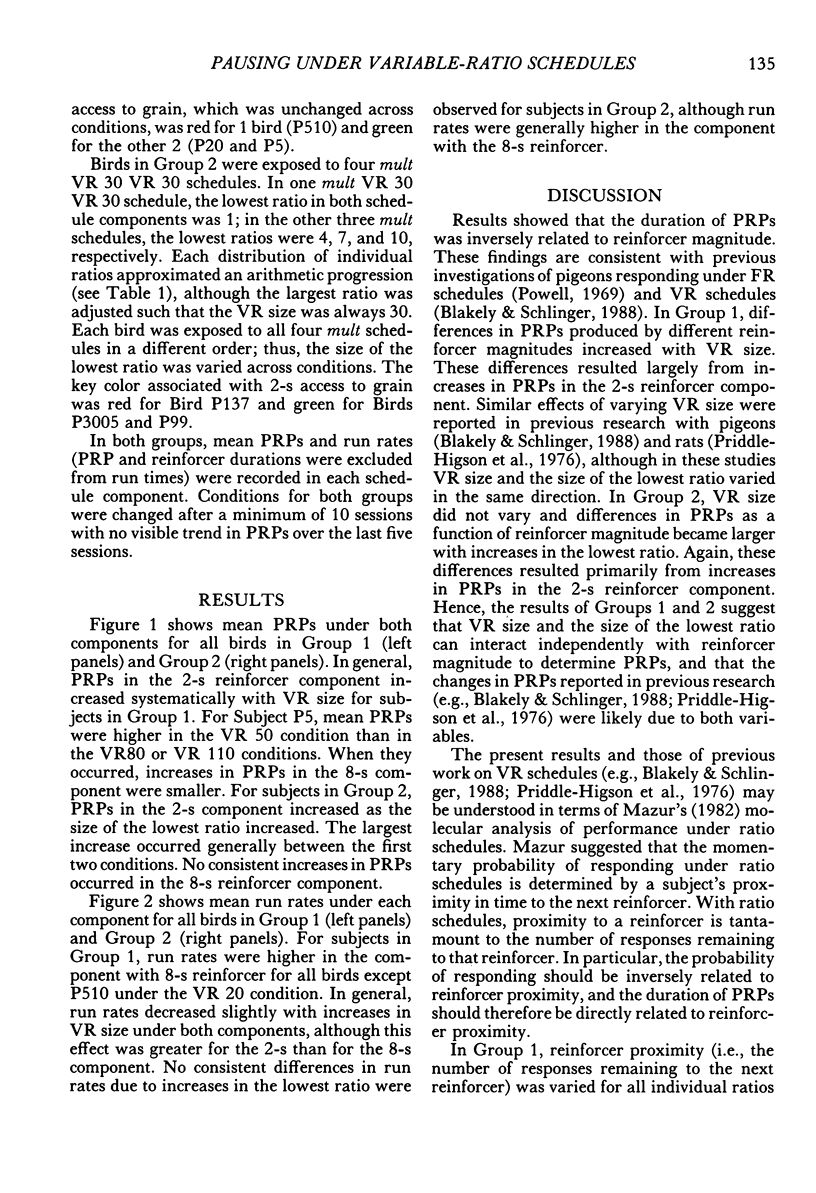
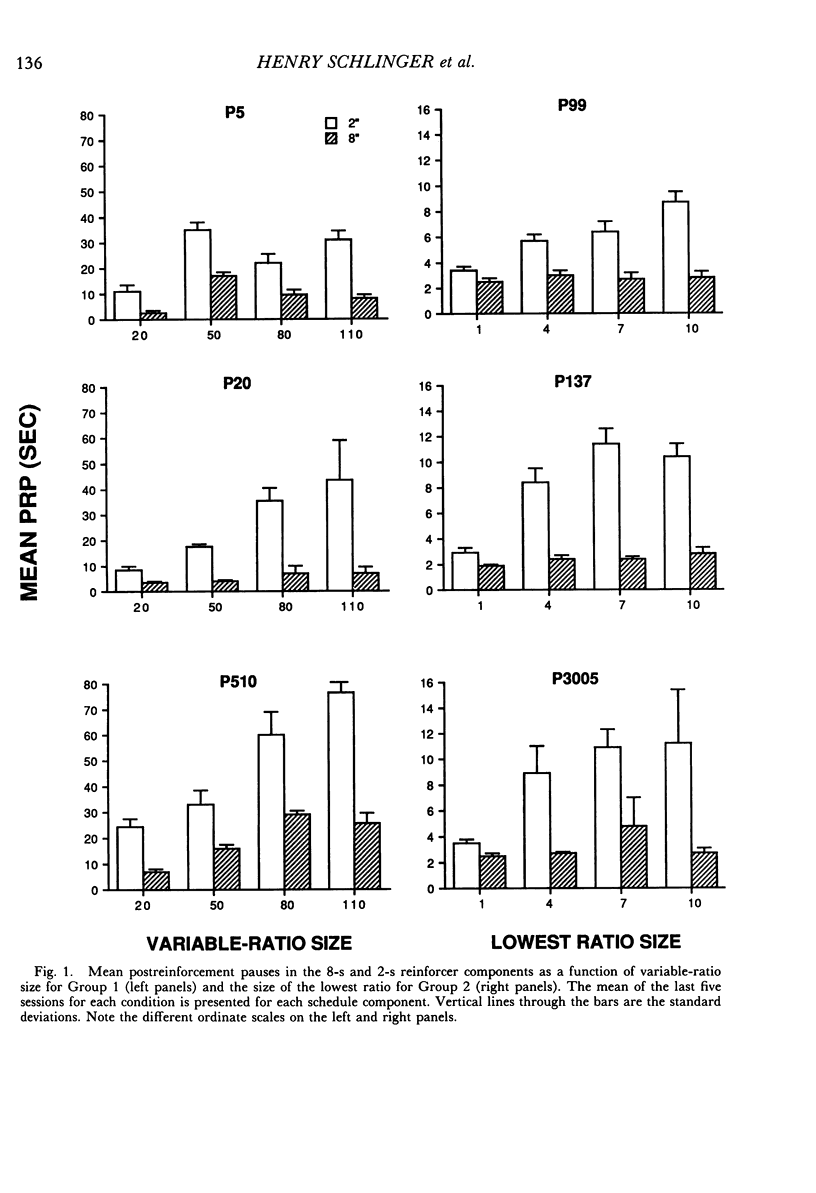
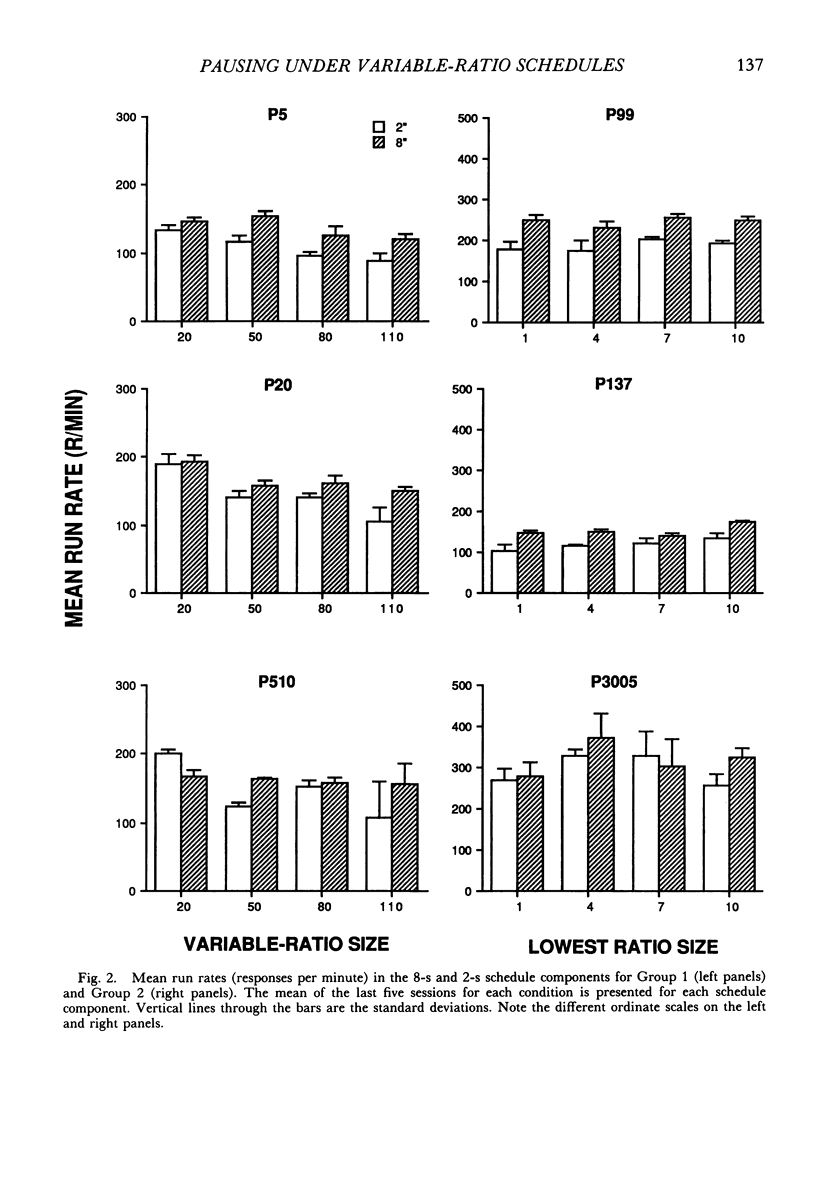
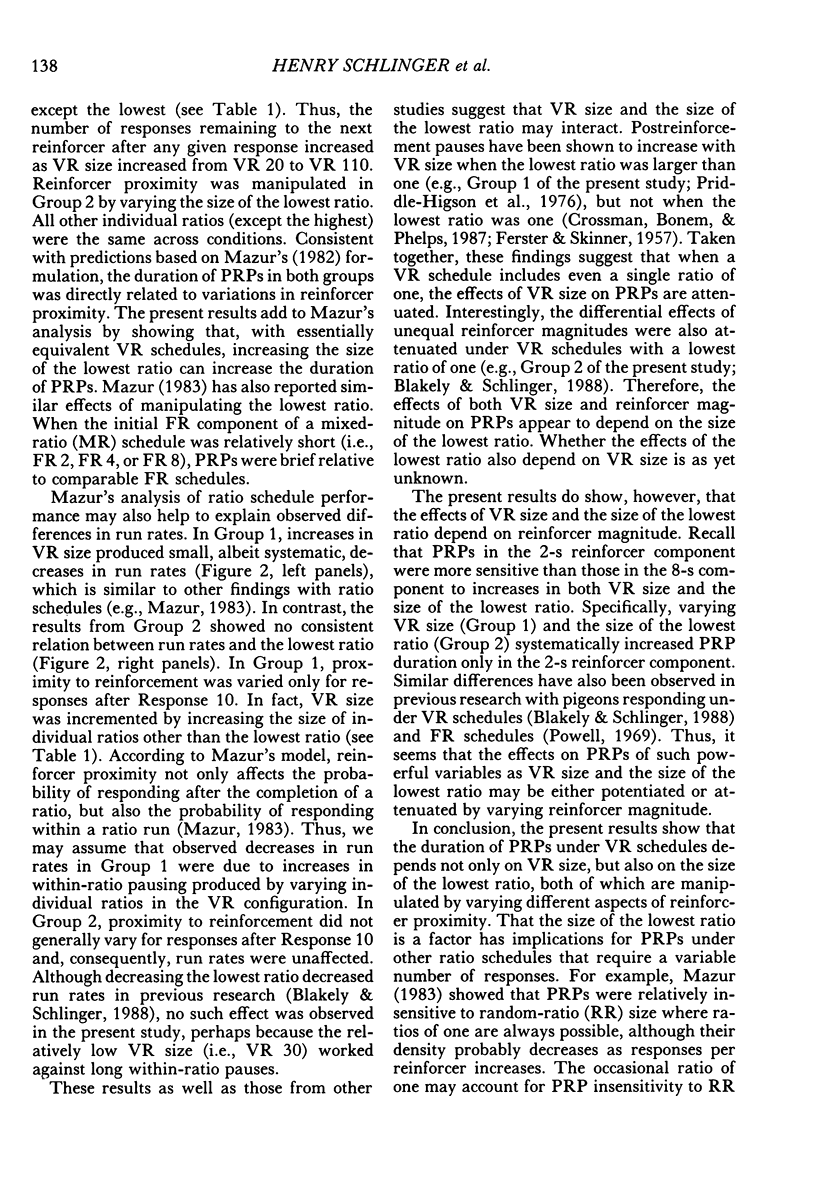
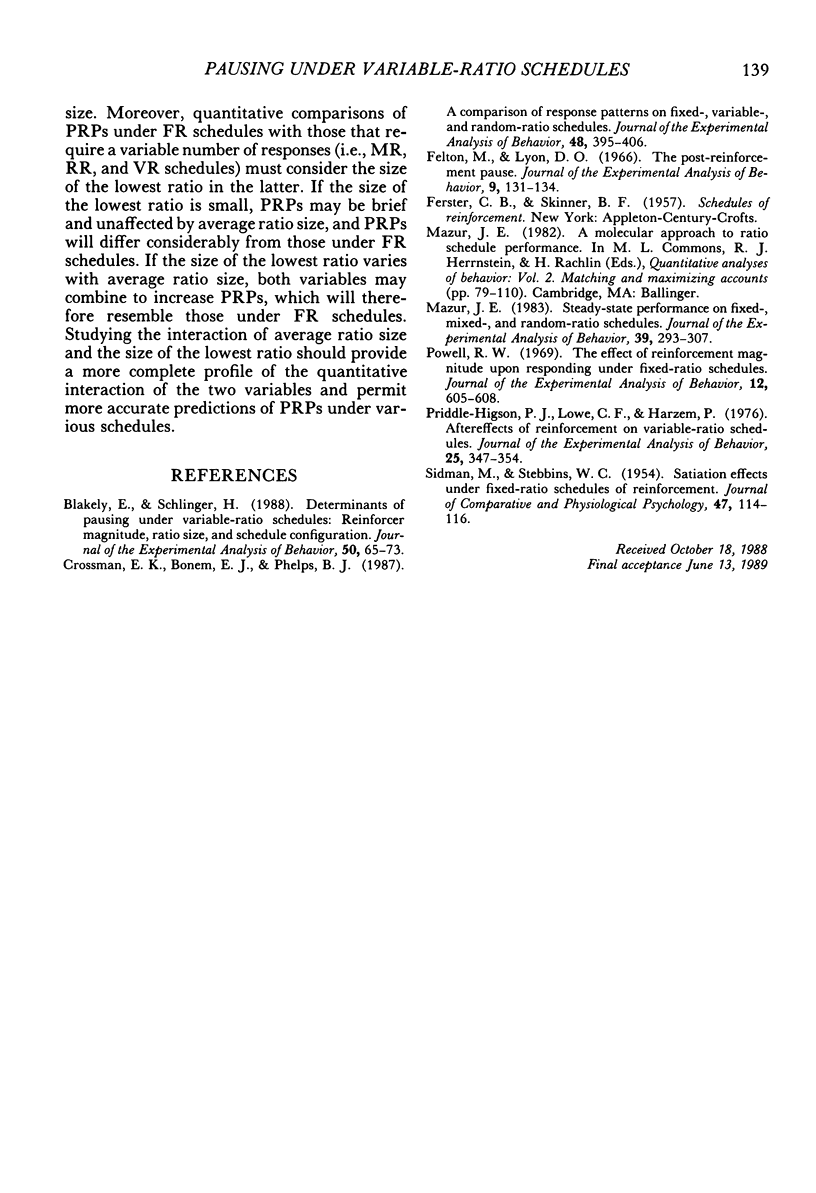
Selected References
These references are in PubMed. This may not be the complete list of references from this article.
- Blakely E., Schlinger H. Determinants of pausing under variable-ratio schedules: Reinforcer magnitude, ratio size, and schedule configuration. J Exp Anal Behav. 1988 Jul;50(1):65–73. doi: 10.1901/jeab.1988.50-65. [DOI] [PMC free article] [PubMed] [Google Scholar]
- Crossman E. K., Bonem E. J., Phelps B. J. A comparison of response patterns on fixed-, variable-, and random-ratio schedules. J Exp Anal Behav. 1987 Nov;48(3):395–406. doi: 10.1901/jeab.1987.48-395. [DOI] [PMC free article] [PubMed] [Google Scholar]
- Felton M., Lyon D. O. The post-reinforcement pause. J Exp Anal Behav. 1966 Mar;9(2):131–134. doi: 10.1901/jeab.1966.9-131. [DOI] [PMC free article] [PubMed] [Google Scholar]
- Mazur J. E. Steady-state performance on fixed-, mixed-, and random-ratio schedules. J Exp Anal Behav. 1983 Mar;39(2):293–307. doi: 10.1901/jeab.1983.39-293. [DOI] [PMC free article] [PubMed] [Google Scholar]
- Powell R. W. The effect of reinforcement magnitude upon responding under fixed-ratio schedules. J Exp Anal Behav. 1969 Jul;12(4):605–608. doi: 10.1901/jeab.1969.12-605. [DOI] [PMC free article] [PubMed] [Google Scholar]
- Priddle-Higson P. J., Lowe C. F., Harzem P. Aftereffects of reinforcement on variable-ratio schedules. J Exp Anal Behav. 1976 May;25(3):347–354. doi: 10.1901/jeab.1976.25-347. [DOI] [PMC free article] [PubMed] [Google Scholar]
- SIDMAN M., STEBBINS W. C. Satiation effects under fixed-ratio schedules of reinforcement. J Comp Physiol Psychol. 1954 Apr;47(2):114–116. doi: 10.1037/h0054127. [DOI] [PubMed] [Google Scholar]


